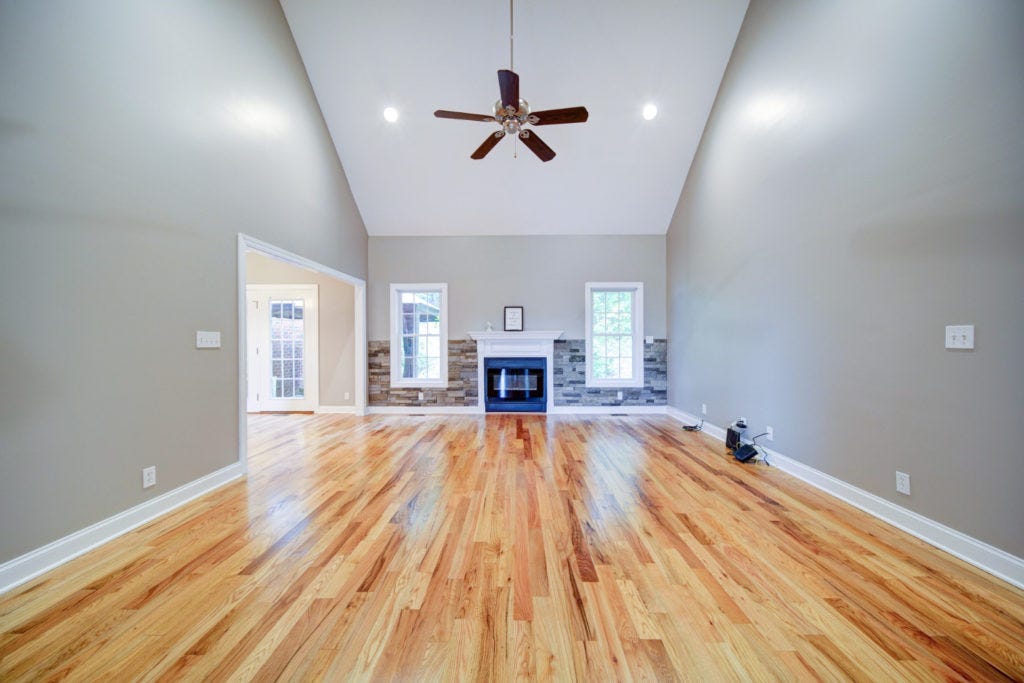In the ever-evolving realm of interior design, concrete flooring that looks like wood has emerged as a popular choice, with a unique twist – the ability to replicate the warm and inviting look of wood. This article delves deep into the world of concrete flooring that mimics wood, exploring its rise, advantages, design options, installation process, and much more.
The Rise of Concrete Flooring
Concrete floors have come a long way from their utilitarian roots. Traditionally associated with industrial spaces, modern advancements have transformed them into a sought-after flooring option for homes and commercial areas.
What Sets Concrete Flooring Apart?
The intrinsic qualities of concrete, such as durability and versatility, set it apart from other flooring materials. The ability to mold and customize concrete opens up a world of design possibilities.
The Allure of Wood-Look Concrete
Wood-look concrete takes the appeal of concrete flooring to a new level by combining the robustness of concrete with the aesthetic charm of wood. It brings a touch of nature indoors while maintaining the durability of concrete.
Advantages of Wood-Look Concrete
Beyond its visual appeal, wood-look concrete offers practical advantages. It is resistant to scratches, dents, and moisture, making it a long-lasting and low-maintenance flooring option.
Design Options and Patterns
One of the exciting aspects of wood-look concrete is the variety of design options available. From realistic wood grain patterns to contemporary styles, homeowners can choose a look that suits their taste.
Installation Process
Installing wood-look concrete floors involves a meticulous process. This section provides a step-by-step guide, helping readers decide whether to enlist professionals or embark on a DIY project.
Cost Considerations
While wood-look concrete may seem like a premium choice, comparing the costs with real wood and other flooring materials reveals its long-term financial benefits.
Maintenance Tips
Preserving the beauty of wood-look concrete is simple with regular maintenance. This section offers practical tips on cleaning and preventive measures.
Sustainability Aspects
For environmentally conscious consumers, wood-look concrete presents a sustainable flooring option. Learn about the eco-friendly practices in its production.
Real-Life Examples
Explore real-life spaces adorned with wood-look concrete flooring. Hear testimonials and experiences from homeowners who have embraced this trend.
Potential Drawbacks
No flooring material is without its drawbacks. Addressing common concerns about wood-look concrete and providing solutions ensures an informed decision.
Comparisons with Other Flooring Options
To aid decision-making, this section compares wood-look concrete with real wood, laminate, and other alternatives, outlining the strengths and weaknesses of each.
Future Trends
As technology advances, so does the world of flooring. Discover predictions for the future of wood-look concrete, including innovations and emerging trends.
Conclusion
In conclusion, concrete flooring that mimics wood offers a winning combination of aesthetic appeal and practicality. Whether renovating or building anew, considering wood-look concrete could redefine your space.
Frequently Asked Questions:
Is wood-look concrete more expensive than real wood flooring?
Initially, wood-look concrete may seem pricier, but when considering long-term costs, it often proves more economical.
Can I install wood-look concrete flooring myself?
DIY installation is possible, but it requires precision. Hiring professionals ensures a flawless outcome.
How do I maintain wood-look concrete floors?
Regular sweeping and occasional mopping with a mild cleaner are usually sufficient. Avoid abrasive substances.
Are there environmentally friendly options for wood-look concrete?
Yes, many manufacturers offer sustainable production practices for eco-conscious consumers.
Can wood-look concrete be used in bathrooms and kitchens?
Absolutely. Its resistance to moisture makes it an excellent choice for these high-traffic areas.

